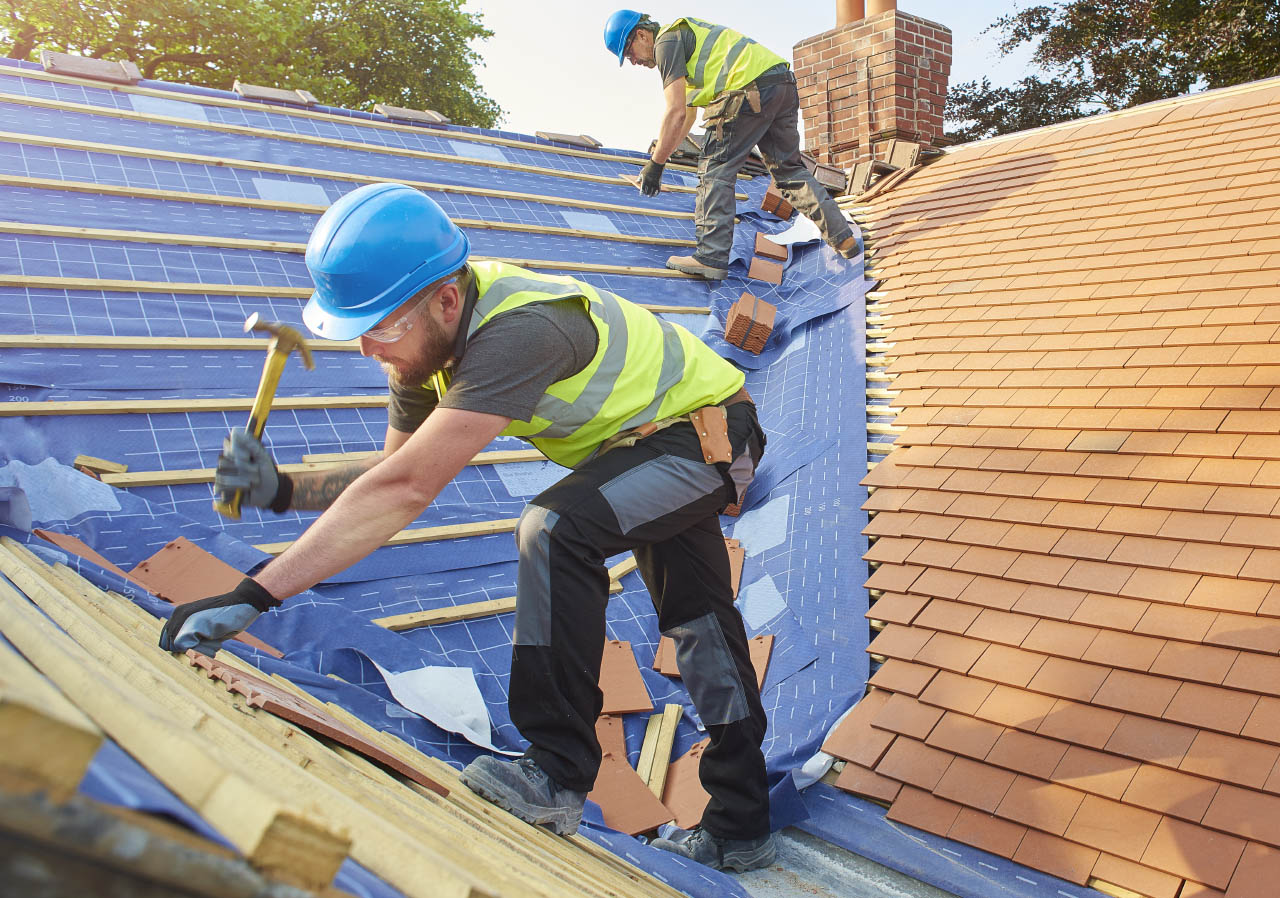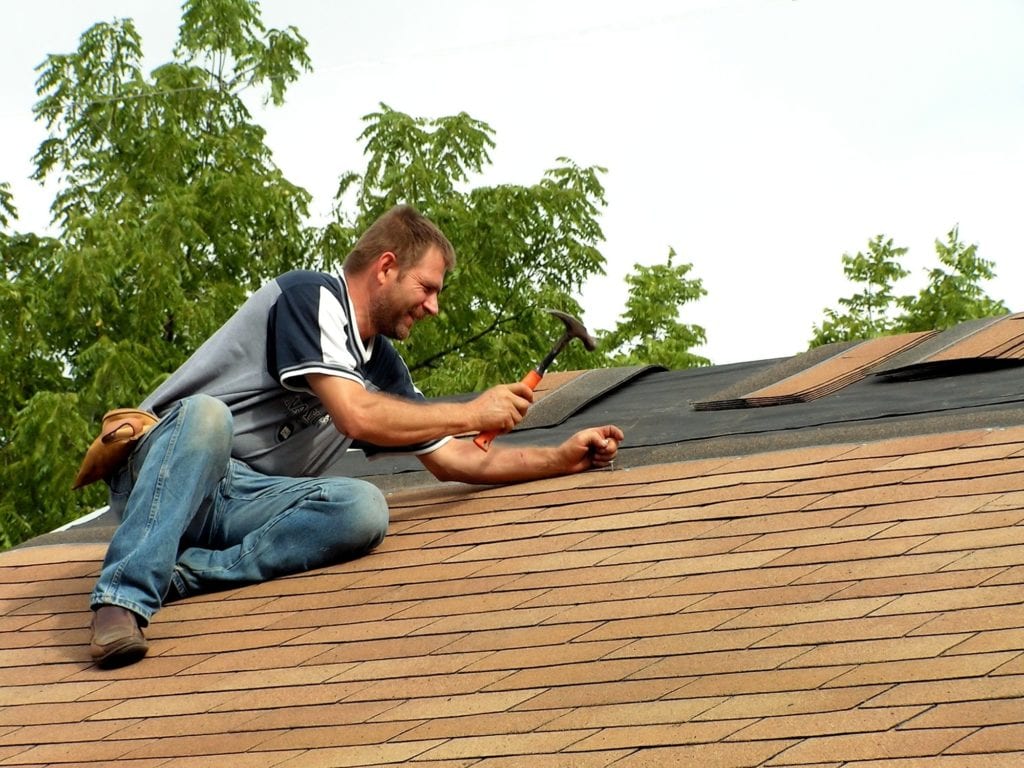Roofing Companies Oahu: Premier Roofers for All Roofing Projects
Roofing Companies Oahu: Premier Roofers for All Roofing Projects
Blog Article
Comprehending the Various Sorts Of Roof Coverings: A Comprehensive Overview for Homeowners
With an array of choices-- varying from the standard gable to the contemporary flat-- each kind presents special advantages and obstacles that need to align with the house owner's particular needs and ecological considerations. As we discover the ins and outs of various roof covering types, it comes to be apparent that one dimension does not fit all; the best selection may stun you.
Saddleback Roof
Saddleback roofs, defined by their triangular form, are among one of the most popular roof designs due to their simpleness and effectiveness in dropping water and snow. This layout features 2 sloping sides that fulfill at a ridge, enabling reliable water drainage and reducing the danger of water build-up. The steep pitch frequently associated with saddleback roofs improves their capacity to handle hefty rainfall, making them appropriate for numerous environments.
In addition to their practical advantages, saddleback roofs supply visual convenience. They can be adjusted to numerous architectural styles, from typical to modern homes. The layout can additionally suit extra features such as dormer home windows, which improve natural light and ventilation in the attic area.
Moreover, gable roofings offer enough area for insulation, adding to power efficiency. Property owners can select from a variety of roof covering products, including asphalt roof shingles, steel, and tiles, better improving personalization choices.
In spite of their benefits, gable roof coverings might require additional support in areas susceptible to high winds or hefty snowfall. In general, the saddleback roof remains a popular choice due to its mix of functionality, durability, and visual allure.
Flat Roofs
Level roofing systems are typically identified for their minimal design and functional applications, particularly in commercial and commercial setups (oahu roofing). These roofing systems feature a nearly horizontal or straight surface area, which enables very easy construction and versatile room utilization. While they might do not have the aesthetic appeal of pitched roof coverings, flat roof coverings provide numerous benefits, particularly in city environments where making best use of space is critical
One of the main advantages of level roofing systems is their ease of access. House owners can utilize the roofing system room for various purposes, such as roof gardens, terraces, or photovoltaic panel setups. Furthermore, flat roofs are commonly a lot more cost-efficient to maintain and install contrasted to their sloped equivalents, as they call for less materials and labor.
Typical products utilized for level roofing systems consist of built-up roof covering (BUR), changed asphalt, and single-ply membrane layers, each offering distinctive benefits. Overall, flat roof coverings offer as a versatile and useful option for several property owners and businesses alike.
Hip Roofs
Hip roof coverings are identified by their sloped sides that assemble on top, forming a ridge. This design stands out from saddleback roofs, as all 4 sides of a hip roof covering incline downwards toward the walls, offering an extra secure framework. The angle of the inclines can differ, allowing for adaptability in building appearances and functionality.
One of the primary benefits of hip roofs is their ability to withstand heavy winds and damaging weather. The sloped surface areas make it possible for far better water drainage, decreasing the risk of leaks and water damages. Additionally, hip roofs use boosted attic area, which can be made use of for storage space or perhaps exchanged livable areas.
Nevertheless, building a hip roof covering can be a lot more costly and complex than simpler roofing system types, such as gable roofings. The added product and labor associated with creating the inclines and guaranteeing appropriate architectural honesty next page can cause higher costs. In spite of these downsides, lots of home owners prefer hip roof coverings for their durability, aesthetic allure, and possibility for energy performance.
Mansard Roofing Systems
Mansard roofing systems, commonly identified by their special four-sided layout, attribute 2 slopes on each side, with the reduced slope being steeper than the top. This architectural style, originating from France in the 17th century, is not only cosmetically appealing however practical, as it optimizes the functional space in the upper floorings of a structure. The high lower slope permits even more clearance, making it an optimal Find Out More selection for lofts or attic rooms, which can be exchanged living rooms.
Mansard roofing systems are characterized by their flexibility, accommodating numerous building styles, from typical to modern-day. They can be created with various products, consisting of asphalt tiles, slate, or steel, giving house owners with a variety of options to fit their preferences and budget plans. Furthermore, the design enables for the combination of dormer windows, boosting all-natural light and air flow in the upper levels.
Nevertheless, it is necessary to consider the potential drawbacks. Mansard roofs may need more maintenance due to the complexity of their style, and their steep inclines can be challenging for snow and rainfall drainage. Generally, mansard roofs integrate beauty with practicality, making them a popular option among house owners looking for unique architectural features.
Dropped Roofs
As homeowners significantly look for simplicity and performance in their building designs, shed roofing systems have arised as a prominent selection. Defined by a solitary sloping plane, a shed roofing system provides a minimal aesthetic that complements different home styles, from contemporary to rustic.
One of the key benefits of a shed roofing is its uncomplicated construction, which frequently translates to reduce labor and material expenses. This design enables reliable water drain, minimizing the danger of leakages and water damages. Furthermore, the upright slope supplies adequate room for skylights, enhancing all-natural light within the inside.
Lost roofs likewise use flexibility in regards to usage. They can be effectively integrated into enhancements, garages, or outdoor frameworks like pavilions and sheds. Moreover, this roof style can suit various roof materials, including steel, asphalt tiles, and even environment-friendly roofing systems, lining up with environment-friendly efforts.
Nonetheless, it is important to think about local environment conditions, as heavy snow tons might require changes to the roofing's angle or structure. Generally, look what i found dropped roofings present a useful and aesthetically pleasing option for property owners wanting to make best use of capability without compromising design.
Conclusion


Gable roofing systems, characterized by their triangular shape, are among the most preferred roof styles due to their simpleness and performance in shedding water and snow. oahu roofing. The high pitch typically associated with gable roofing systems boosts their capability to take care of heavy rainfall, making them ideal for various climates
While they might do not have the aesthetic appeal of pitched roofs, level roofings use various benefits, particularly in metropolitan environments where making best use of room is vital.

Report this page